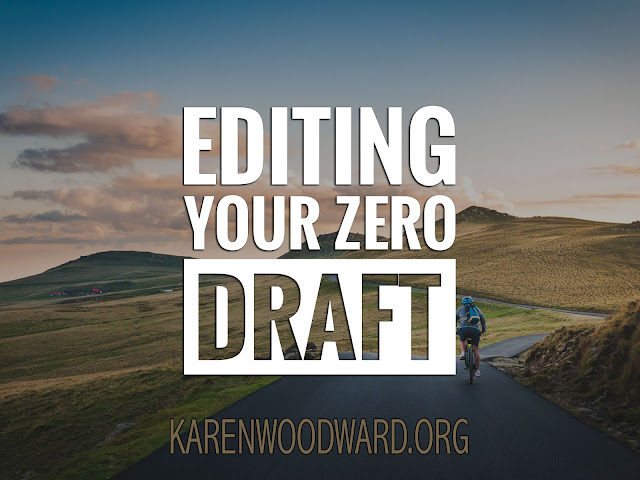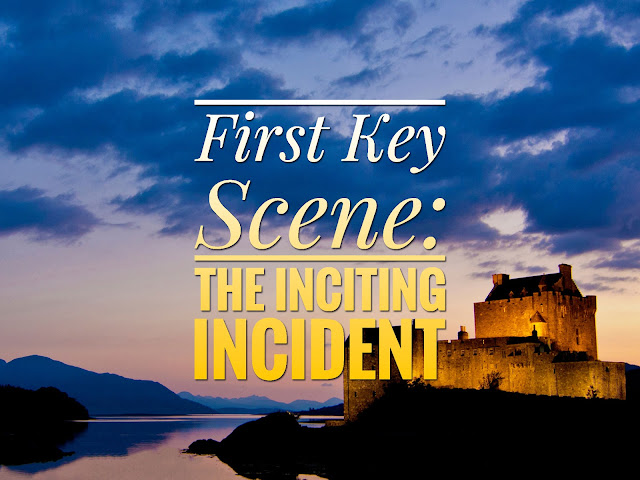I put the following together for my own use (I'm doing #NaNoWriMo this year), but I thought others might be interested as well so I decided to share it.
1. Inciting Incident (0 to 12.5%)
Here we establish the Ordinary World. We establish the protagonist’s ordinary routine, we establish how the protagonist relates to other people, those who like them as well as those who hate them. The writer lays bare the protagonist's strengths and weaknesses. The story world is established; what is normal, what isn’t. What is considered moral, what isn’t. All this is in service to showing the reader the protagonist’s place in the world.
We also show a significant change in the story world, one without which we would not have the Call to Adventure or the protagonist’s Acceptance of the Call.
Clear as mud? Let me give you an example. In Star Wars: A New Hope I would argue that the inciting incident was Darth Vader boarding Princess Leah’s spacecraft and imprisoning her. That event broke the status quo: diplomatic vehicles should not be forcibly boarded. Because of that change Luke bought the droids. Because Luke bought the droids his aunt and uncle were murdered and their farm burned down. Further, these events brought about both the Call to Adventure and Luke's Acceptance of the Call.
The Inciting Incident usually occurs quite early in the story, within the first 5%. The Call to Adventure generally occurs around the 12% to 15% mark. Usually the Call is refused and then, after talking with a mentor, or after certain things about the protagonist’s life changes, the Call is accepted.
After the Call is accepted, some sort of plan is formulated and put into motion. This culminates in ...
2. Crossing the Threshold (25%)
You could also look at this event, Crossing the Threshold, as the first of three disasters for the protagonist, the others being the first Pinch Point and the All Hope is Lost point. I’ll talk more about these other two points, below.
Before I continue, let me say a word or two about the protagonist’s inner and outer goals.
Inner and Outer Goals
The protagonist’s outer goal will have to do with something external, something in the story world. The goal could be slaying a dragon and claiming its treasure, or bringing back a lost ark, or extracting a spy, or robbing a bank. You get the idea.
The inner goal, on the other hand, has to do with the development of the protagonist’s character. It has to do with them becoming a better person. There is a moral dimension to the inner goal. Perhaps, as in Edge of Tomorrow, the protagonist goes from cowardice to courage. In The Matrix the protagonist, Neo, goes from lacking faith to having faith -- his challenge was to believe.
Now that we’re on the same page regarding inner versus outer goals, let’s ask: What happens when the protagonist crosses the threshold and enters the Special World of the Adventure?
Generally, there isn’t any progression toward the protagonist’s inner goal but there is a lot that happens regarding the protagonist’s progress toward her outer goal. Commonly, there is an actual change in the setting. The protagonist travels to another town, another country, another planet.
Also, the transition between the Ordinary World and the Special World of the Adventure is generally not a smooth transition. The protagonist suffers a tragedy.
For instance, in Get Out the protagonist (Chris Washington) crosses into the Special World when he goes to visit his girlfriend’s (Rose Armitage's) parents and allows Rose’s mother to hypnotize him.
The mother sends his consciousness into a place called the “sunken place.” Get Out is a horror movie so, needless to say, the sunken place is not a happy place filled with kittens and puppies, it’s a slice of hell. The important thing is that this incident — Chris being hypnotized and tortured — divides the story into two: what came before this event and what came after.
Similarly, when in Star Wars: A New Hope, Luke sees the smoking corpses of his Aunt and Uncle, when Luke realizes that their farm has been destroyed, this one event divides his life into before and after. That one event completely changed the trajectory of his life.
Trials and Tribulations/Fun and Games
The Special World is very different from the Ordinary World. After the protagonist crosses the threshold and enters the Special World she is like a fish out of water. She needs to learn how things are done here and, as a result, makes mistakes.
B-Story
The B-Story is where the protagonist bonds with allies. Sometimes this is a love story. The B-Story is where the protagonist makes progress toward her internal goal.
3. First Pinch Point (37.5%)
The first pinch point is the second disaster for the protagonist. Here we get to see the antagonist up close and personal or we see the direct effects of the antagonist’s actions. At this point the antagonist isn’t concerned about the protagonist, he or she isn’t a serious threat.
The Plan
As a result of the antagonist’s attack, the protagonist’s energy is redirected. Before, she was focused on understanding the Special World and trying to fit in. Now she is focused on attacking the antagonist. Often there is a scene where the protagonist and her allies meet in a bar and make a plan. A journey is often involved.
The Sacrifice
In order for The Plan to work, the protagonist will have to make a big sacrifice.
4. Midpoint (50%)
The Midpoint is all about the protagonist’s inner journey, her inner goal.
Generally, there is a confrontation at the midpoint, either between the protagonist and antagonist or between the protagonist and one of the antagonist’s minions.
For me, the essential thing about the Midpoint is that the hero learns something crucial about the Special World that helps her understand how truly dire her situation is. Further, this understanding causes her to change tactics.
For example, in Edge of Tomorrow, Cage discovers that his visions aren’t real, that they have been sent to him to lure him into a trap. As a result, he no longer has a plan. He doesn't know how to beat the villain. Because of this he changes his tactics and, at the same time, the stakes are raised.
The important thing here, though, has to do with the Inner Journey. Something important changes inside the character. Cage realizes that, even though he loves Rita, he must let her go. This is the first time he has moved from thinking about himself and his wants and needs to thinking more about the wants and needs of the larger group.
The inner journey can be summed up in a Moral Premise. In Cage’s case perhaps this would be: Being cowardly will kill your soul. Being courageous can save you and your community.
5. Second Pinch Point (62.5%)
Because of the change in the character’s internal motivation, the protagonist begins to make progress. This spooks the antagonis, causing him to personally intervene and attack the protagonist or put obstacles in her way. But this is a personal intervention on the part of the antagonist. The protagonist pays a BIG PRICE.
6. All Hope is Lost (75%)
This is the third and final disaster. The protagonist suffers a major defeat at the hands of the antagonist. In fact, it is such a stunning defeat that it seems as though the antagonist has defeated the protagonist.
This ultimate defeat will likely be the last defeat in a three-beat try and fail cycle.
Resurrection. Epiphany
Protagonist realizes something, something internal, something moral, that finally, completely, takes her from her weakness into her strength.
7. Race to the Finish (87.5%)
At this point she has entered the forest where it is darkest (accepting the call to adventure) and defeated the opposition. She has climbed the hierarchy and is almost at the top. Now there is anew entering the forest where it is darkest. The protagonist has changed, grown. After each disaster the protagonist has entered the forest where it is darkest.
This, now, is the darkest point and the highest stakes.
At this point the protagonist has almost completely transformed. She has become much more physically and mentally skilled and has become well adapted to the Special World. Also, she has begun her inner transformation. Now she pulls out all the stops. She and her allies make a plan. This plan will fall part before the final confrontation but they make a plan and it works for awhile.
8. Climax/Final Confrontation (98%)
The protagonist and antagonist battle. The protagonist wins or loses. If she wins then antagonist loses and that’s that. If the protagonist loses, then the antagonist might win or lose. (They can both fail.)
During the battle, the antagonist seems weaker than the antagonist. It seems that she’s losing. But then she draws on a lesson she learned in the Special World of the Adventure. This catches the antagonist off guard and the protagonist defeats the antagonist.
Wrap Up
Show the changes in the protagonist’s life, how her friends, family and community benefited.
Recommended Articles:
Quora article: If the 2nd pinch point is known as the 'darkest hour' or the 'all is lost' point what is the nickname of the 1st pinch point? My favorite answer to this question is the first, and much of this article is patterned after it.
The Inciting Incident vs The Call To Adventure










